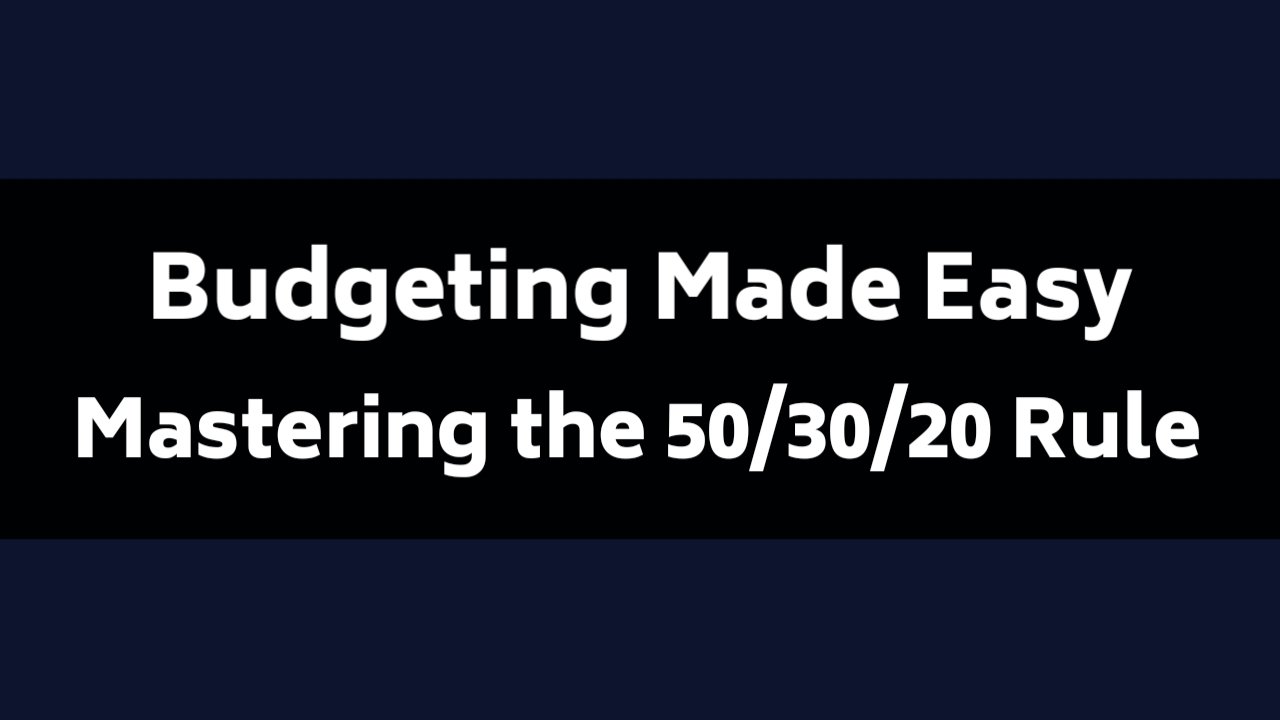Let’s face it, budgeting isn’t everyone’s favorite pastime. Numbers, spreadsheets, restrictions – it can all feel a bit overwhelming. But what if I told you there’s a simple, effective budgeting strategy that could transform your relationship with money? Enter the 50/30/20 rule – your new best friend in the world of personal finance.
What is the 50/30/20 Rule?
At its core, the 50/30/20 rule is an intuitive budgeting framework that helps you allocate your after-tax income into three main categories:
- 50% for Needs: This covers your essential expenses – the things you absolutely need to survive and function. Think rent/mortgage, utilities, groceries, transportation, and minimum debt payments.
- 30% for Wants: This is where you can have a bit of fun! Dining out, entertainment, hobbies, that new gadget you’ve been eyeing – they all fall under “wants.”
- 20% for Savings & Debt Repayment: This portion goes towards building your financial future. It includes savings for emergencies, retirement, investments, and any extra debt payments beyond the minimum.
Why the 50/30/20 Rule Works
This rule’s beauty lies in its simplicity and flexibility. It provides a clear structure without being overly restrictive. Here are some of the reasons why it’s a popular choice for budgeting newbies and seasoned pros alike:
- Easy to Understand: The percentages are easy to grasp, making it beginner-friendly.
- Prioritizes Needs: It ensures your essential expenses are covered first, providing a sense of security.
- Allows for Flexibility: The “wants” category lets you enjoy life without feeling deprived.
- Promotes Financial Discipline: It encourages consistent saving and debt repayment, setting you up for long-term success.
- Adaptable to Different Incomes: The percentages can be adjusted based on your individual circumstances and financial goals.
How to Implement the 50/30/20 Rule
Ready to give it a try? Here’s a step-by-step guide:
- Calculate Your After-Tax Income: Start by determining your net income – the amount you take home after taxes and other deductions.
- Categorize Your Expenses: Review your bank statements or use a budgeting app to track your spending and categorize it into “needs,” “wants,” and “savings & debt repayment.”
- Apply the Percentages: Multiply your after-tax income by 0.5, 0.3, and 0.2 to find out how much you should allocate to each category.
- Make Adjustments: If your current spending doesn’t align with the recommended percentages, identify areas where you can cut back or reallocate funds.
- Track Your Progress: Regularly review your budget to see how you’re doing and make any necessary adjustments.
Tips for Success
- Be Honest with Yourself: When categorizing expenses, be realistic about what’s truly a “need” versus a “want.”
- Start Small: If you’re new to budgeting, don’t try to overhaul your entire financial life overnight. Start with small changes and gradually build up.
- Use Budgeting Tools: There are plenty of apps and online tools that can help you track your spending and stick to your budget.
- Automate Your Savings: Set up automatic transfers to your savings account each month so you don’t even have to think about it.
- Be Flexible: Life happens, and your budget should be able to accommodate unexpected expenses. Don’t be afraid to make adjustments as needed.
Beyond the 50/30/20: Making it Your Own
While the 50/30/20 rule provides a solid foundation, remember that it’s just a guideline. Feel free to tweak the percentages to suit your unique situation and goals. For example:
- If you’re focused on paying off debt quickly, you could increase the “savings & debt repayment” category to 30% and reduce “wants” to 20%.
- If you live in a high-cost-of-living area, you might need to allocate more than 50% to “needs.”
- If you’re already debt-free and have a comfortable emergency fund, you could increase the “wants” category and enjoy more of life’s pleasures.
Conclusion
The 50/30/20 rule isn’t a magic formula, but it’s a powerful tool that can simplify budgeting and put you on the path to financial well-being. Remember, it’s about progress, not perfection. Start today, be consistent, and watch your financial confidence grow!
Remember: Budgeting isn't about restriction – it's about empowerment. By taking control of your finances, you'll gain the freedom to live life on your terms.
